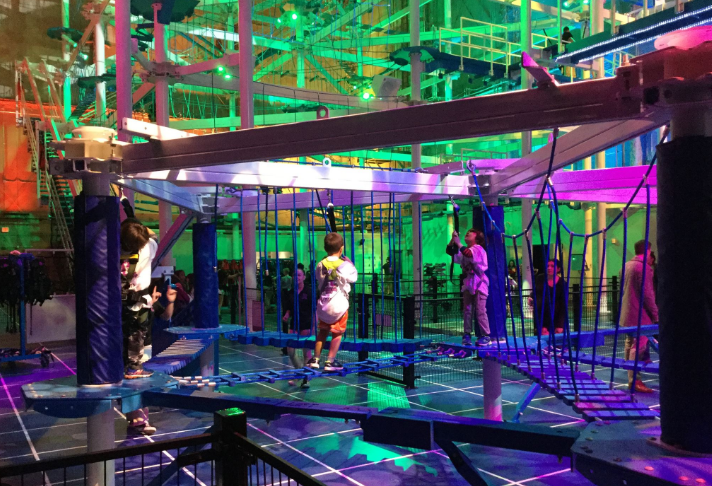Harnesses and Personal Protective Equipment (PPE)
The most critical component in an indoor ropes course is the personal protective equipment provided to users, particularly harnesses. Harnesses must meet rigorous safety standards, such as those set by the International Climbing and Mountaineering Federation (UIAA) or the American National Standards Institute (ANSI). These safety harnesses are designed to distribute the force of a fall across the body, minimizing the risk of injury. High-quality harnesses and associated gear can cost between $100 to $300 per set, and must be inspected regularly for wear and tear.
Professional Installation and Design
The design and installation of indoor ropes courses should be performed by certified professionals. Courses need to be engineered to support more than the maximum expected load, typically several times the weight of the heaviest participant. Key structural components like support beams, platforms, and anchor points should be rigorously tested and certified to withstand intense and repeated use. The cost for professional design and installation varies widely but can start from $10,000 for small, basic setups to over $100,000 for extensive, complex courses.
Continuous Belay Systems
To ensure continuous safety throughout the course, many modern indoor ropes courses utilize a continuous belay system. This system ensures that participants are always connected to a safety line from the start to the end of the course. Unlike traditional belaying, which requires manual transfer between elements, continuous systems reduce the risk of accidental detachment. The installation of such systems adds to the upfront cost but significantly enhances safety, costing approximately $20,000 to $40,000 depending on the course length and complexity.
Staff Training and Emergency Preparedness
Properly trained staff are essential for the safe operation of an indoor ropes course. Staff training should include rescue procedures, regular equipment checks, and effective communication skills. Training programs can cost around $500 to $1,000 per employee but are vital for maintaining a safe environment. Additionally, facilities should have clearly defined emergency procedures and regular drills to ensure readiness in case of an accident.

Routine Inspections and Maintenance
Regular maintenance and inspection are crucial to ensure the long-term safety and functionality of indoor ropes courses. Inspections should be conducted daily, with more thorough checks on a monthly and yearly basis. This includes examining all harnesses, ropes, pulleys, and carabiners for signs of wear or damage. Professional annual inspections by a certified body can cost between $2,000 and $5,000 but are crucial for compliance with safety regulations and standards.
Adequate Fall Protection
Flooring beneath the ropes course should be designed to absorb impacts effectively. Materials such as thick foam padding, crash mats, or specialized flooring systems are used to reduce the severity of injuries in the event of a fall. Installation costs for high-quality impact-absorbing flooring can range from $5,000 to $20,000, depending on the area covered and material used.
Ensuring the safety of participants on an indoor ropes course involves a comprehensive approach that spans from the correct use of PPE to the architectural integrity of the course itself. By implementing these essential safety measures, facilities can provide a thrilling yet secure environment for all users.